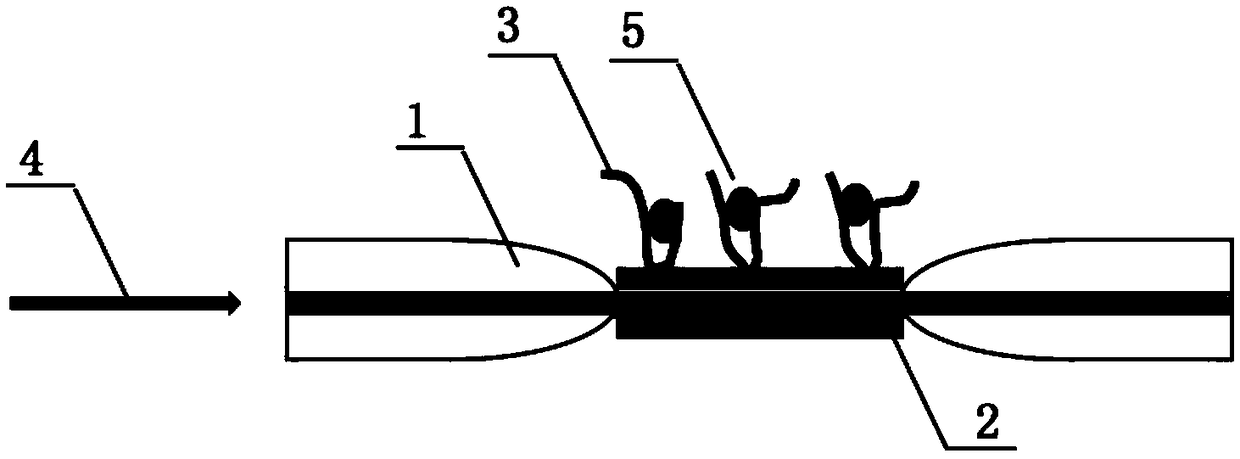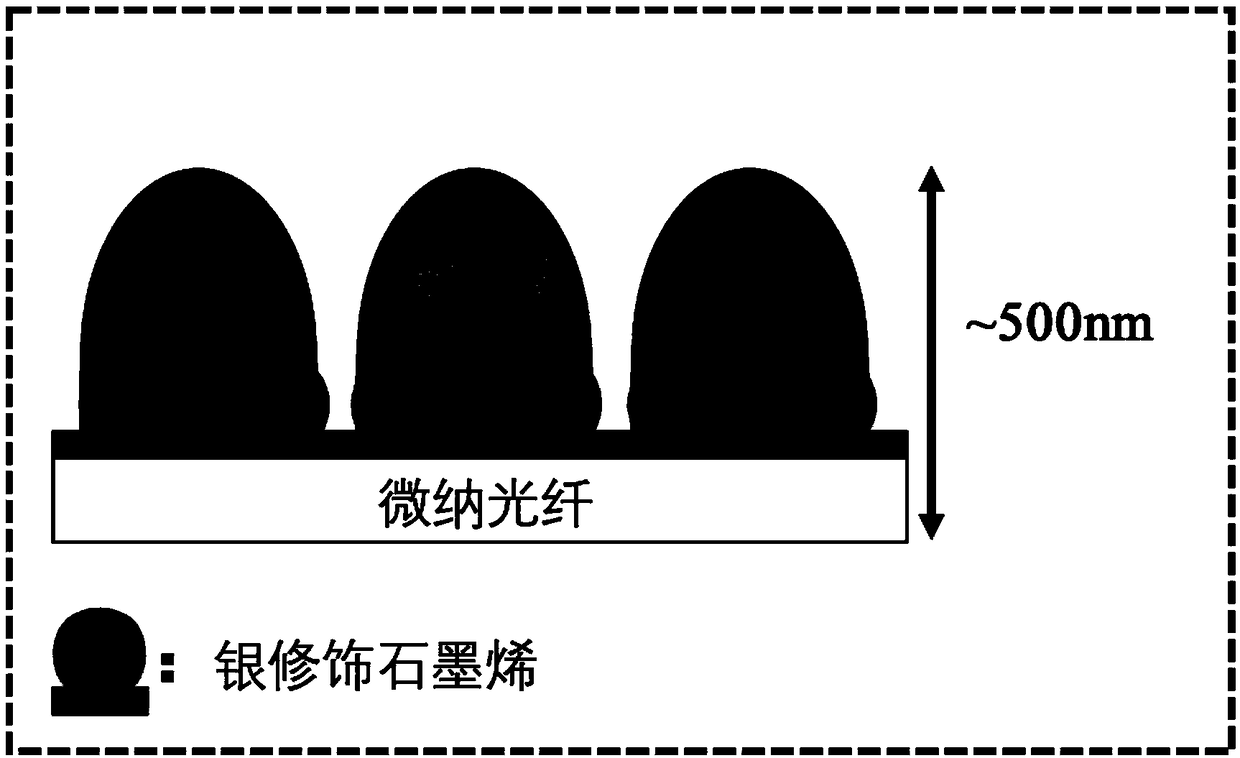Sensitized cytochrome c optical fiber sensing device and method
A cytochrome, optical fiber sensing technology, applied in the field of biomedical optical sensing technology design, can solve the problems of low detection limit, expensive, insufficient to track apoptosis in situ, etc., to enhance the sensitivity of evanescent wave and optical fiber sensing Enhanced effect
- Summary
- Abstract
- Description
- Claims
- Application Information
AI Technical Summary
Problems solved by technology
Method used
Image
Examples
Embodiment 1
[0039] Optical fiber sensing technology uses optical fiber physical media with a scale of hundreds of microns and light waves as information carriers. It has the advantages of low cost, compact structure, high sensitivity, remote monitoring, corrosion resistance, and strong biocompatibility. It has become the fastest growing in recent years. One of the biosensing technologies. In the relevant reports of fiber optic biosensing research, high performance fiber optic interferometer has become a research hotspot. The most representative one is the tapered micro-nano optical fiber interferometer sensor developed in recent years. In addition to the characteristics of conventional optical fiber sensors, this type of optical fiber sensor can also use the evanescent wave mode excited by it that is sensitive to the surrounding environment , not only greatly enriched its detection objects, but also improved the measurement accuracy. It has very broad application prospects in the field o...
Embodiment 2
[0044] like figure 1 As shown, the present embodiment provides a method for sensing sensitized cytochrome c optical fiber, the method comprising: drawing the photosensitive optical fiber into a tapered micro-nano optical fiber 1 with a diameter of 10.5 microns on a flame, and drawing the tapered micro-nano optical fiber 1 The optical fiber 1 is fused with a single-mode optical fiber to make an optical fiber sensing probe; the graphene interface 2 modified by silver nanoparticles is assembled on the side of the tapered micro-nano optical fiber 1 to form a single-layer film, and the DNA is adapted to the surface through non-covalent bonding. The ligand 3 is immobilized on the surface of the graphene interface 2; after the DNA aptamer 3 is immobilized, the optical fiber sensing probe is immersed in the culture medium containing the cells, and the light source 4 is input into the tapered micro-nano optical fiber. The evanescent wave on the side of the micro-nano optical fiber 1 is...
PUM
| Property | Measurement | Unit |
|---|---|---|
| Diameter | aaaaa | aaaaa |
| Diameter | aaaaa | aaaaa |
Abstract
Description
Claims
Application Information
 Login to View More
Login to View More - R&D
- Intellectual Property
- Life Sciences
- Materials
- Tech Scout
- Unparalleled Data Quality
- Higher Quality Content
- 60% Fewer Hallucinations
Browse by: Latest US Patents, China's latest patents, Technical Efficacy Thesaurus, Application Domain, Technology Topic, Popular Technical Reports.
© 2025 PatSnap. All rights reserved.Legal|Privacy policy|Modern Slavery Act Transparency Statement|Sitemap|About US| Contact US: help@patsnap.com



